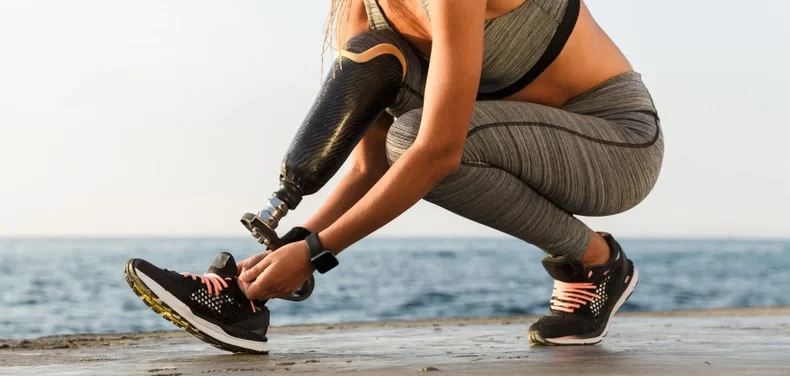Lower limb prosthetics have revolutionized the lives of millions of individuals who have experienced limb loss due to trauma, illness, or congenital conditions. These advanced artificial limbs are far more than mechanical aids—they embody independence, dignity, and the possibility of living life without limits. Thanks to innovation in prosthetic design and technology, users can regain mobility, improve functionality, and restore their confidence.
What Are Lower Limb Prosthetics?
Lower limb prosthetics are custom-designed devices used to replace a missing leg, foot, or part of the lower body. Their primary purpose is to restore mobility and function, enabling users to walk, run, and engage in daily activities with greater ease and stability.
Each prosthetic is tailored to the individual’s unique needs—factoring in the amputation level, body weight, activity goals, and lifestyle. With proper alignment, fitting, and rehabilitation, prosthetic users can achieve remarkable outcomes.
Types of Lower Limb Prosthetics
Understanding the different types of lower limb prosthetics is essential to finding the most appropriate solution:
- Transfemoral Prosthesis (Above-Knee) :
Specifically created for people who have lost their limb above the knee, this type of prosthesis includes an artificial knee joint to support mobility. These devices include an artificial knee joint and require more complex motion control and alignment to ensure smooth walking. - Transtibial Prosthesis (Below-Knee):
Suited for individuals with amputations below the knee, where the knee joint remains intact and functional. This type provides greater ease of use and improved mobility compared to above-knee alternatives. - Hip Disarticulation Prosthesis:
Used when the entire leg, including the thigh bone (femur), has been amputated. These advanced prosthetic systems demand specialized fitting, physical conditioning, and comprehensive rehabilitation. - Partial Foot Prosthesis:
Ideal for individuals who have lost only a portion of the foot. These devices can include custom orthotic inserts or small prosthetic extensions and generally require less adaptation time.
Key Components of a Lower Limb Prosthesis
A modern lower limb prosthesis comprises several critical components, each playing a vital role in functionality and comfort:
- Socket :This is the interface between the residual limb and the prosthetic. A well-fitted socket ensures stability and comfort, minimizing skin irritation or pressure sores.
- Suspension System :Keeps the prosthetic limb securely in place on the residual limb, even during physical activity.
- Pylon:The pylon serves as the main support structure within the prosthesis, functioning much like the internal framework of a limb.It maintains alignment and transfers weight from the body to the ground.
- Foot or Knee Mechanism :These advanced parts enable smooth movement and help cushion impact during walking or other activities. Advanced versions mimic natural gait patterns and adapt to various walking surfaces.
Materials Used in Modern Prosthetics
Today’s prosthetics combine cutting-edge materials and biomechanical innovation to enhance durability, performance, and user comfort:
- Carbon Fiber – Lightweight and strong, ideal for active individuals.
- Titanium – Corrosion-resistant and durable, suitable for structural elements.
- Medical-Grade Plastics – Offer flexibility and reduce weight without compromising strength.
These materials allow users to enjoy a more natural gait and engage in physical activities without feeling weighed down.
The Perfect Fit of Prosthetics
The right prosthesis can significantly impact a person's physical and emotional well-being. Here are some of the transformative benefits users experience:
- Improved Mobility & Independence – Perform everyday tasks with ease and confidence.
- Enhanced Confidence & Mental Health – Restore self-esteem by regaining control over your life.
- Postural Balance – Achieve better alignment, reducing strain on the spine and remaining limb.
- Physical Engagement – Participate in sports, travel, and recreation without restrictions.
Enhanced Quality of Life – Experience greater independence and a revitalized outlook on everyday living.
Challenges Faced by Users
While the benefits are immense, users often face several challenges that require support and awareness:
- Initial Discomfort – Learning to use a prosthesis takes time and can cause temporary soreness or irritation.
- Ongoing Adjustments – Periodic refinements and alignment checks are needed to maintain comfort and function.
- Psychological Adjustment – Adapting emotionally to limb loss and prosthesis usage can be demanding; mental health support is crucial.
- Financial Burden – High-quality or advanced prosthetic limbs can be expensive and are not always fully covered by insurance.
Step Into a Better Tomorrow With Right Lower Limb Prosthetics
Lower limb prosthetics are a testament to how medical science, engineering, and human willpower can come together to change lives. With the right prosthesis, rehabilitation, and care, individuals can reclaim their independence and confidently step into a future full of opportunity. As prosthetic technologies continue to evolve, they offer more lifelike function, better accessibility, and a brighter path forward for every amputee.

 Download Catalogue
Download Catalogue


